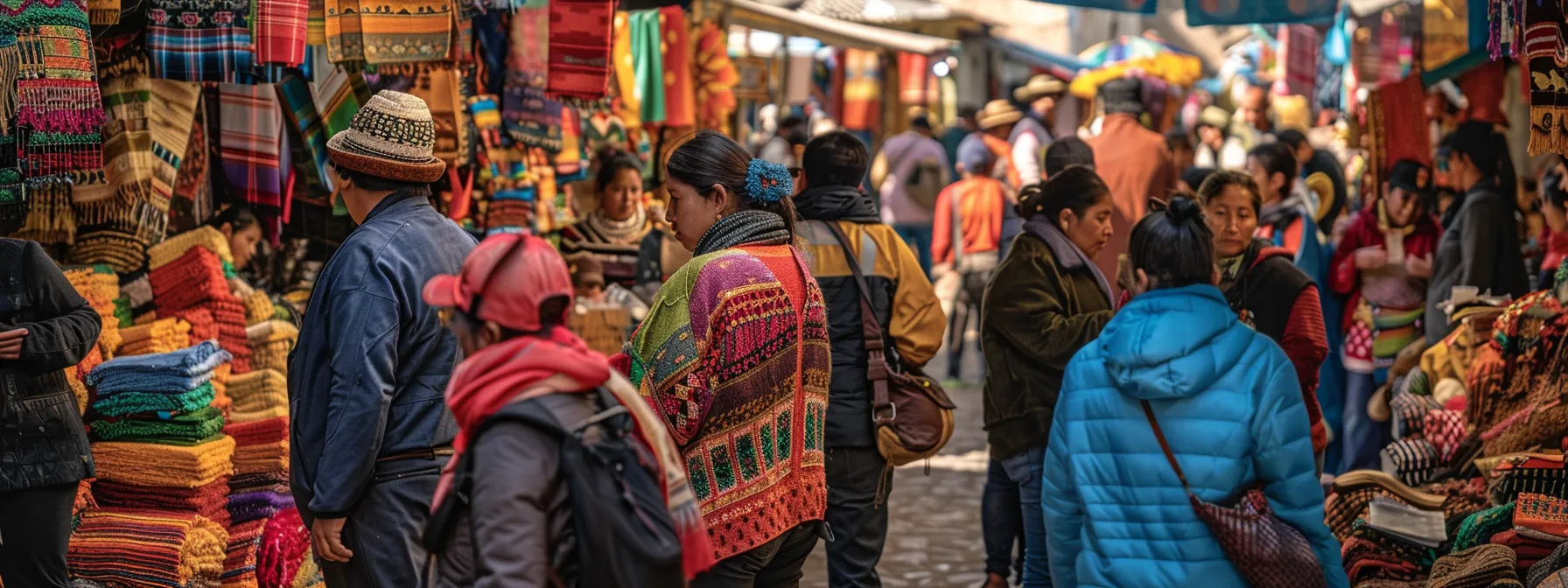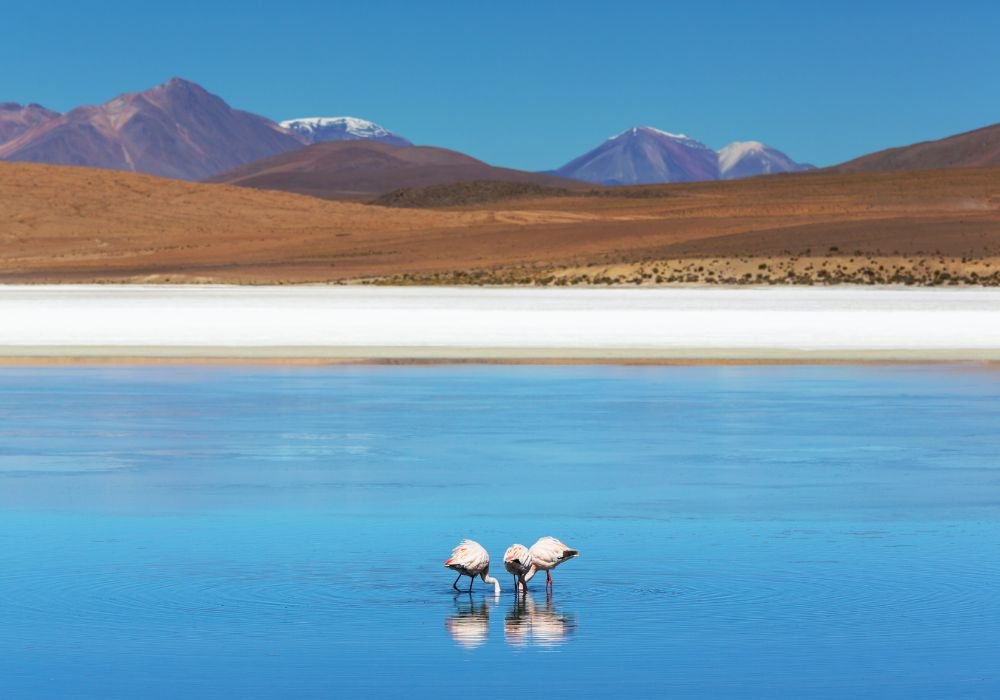Discover Bolivia’s top tourist attractions: A guide to majestic sights
Bolivia, a hidden gem in South America, boasts some of the most breathtaking sights on the continent. From the otherworldly Salar de Uyuni to the vibrant streets of La Paz, this guide covers the top 10 places to visit in Bolivia.
We’ll explore the stunning Lake Titicaca, delve into ancient history, and uncover natural wonders that will leave you awestruck.
Whether you’re a nature enthusiast, history buff, or culture seeker, Bolivia’s diverse attractions offer something for everyone. Get ready to embark on an unforgettable journey through this captivating country.
Key takeaways
- Bolivia offers diverse landscapes from Andes mountains to Amazon rainforest, showcasing natural wonders and historical sites
- Salar de Uyuni’s salt flats provide unique experiences in both dry and wet seasons
- La Paz features attractions like the Witches’ Market and Mi Teleférico cable car system
- Madidi National Park is a biodiversity hotspot offering wildlife watching and sustainable tourism opportunities
- The Oruro Carnival showcases Bolivia’s rich cultural heritage through vibrant parades and traditional dances
Introduction to Bolivia’s majestic attractions

I’ve always been captivated by Bolivia’s diverse landscapes and rich cultural heritage. From the towering Andes mountains to the lush Amazon rainforest, this country offers a treasure trove of natural wonders and historical sites that never fail to amaze me.
One of my favorite spots is Potosí, a high-altitude city with a fascinating mining history. The contrast between its colonial architecture and rugged surroundings creates a unique atmosphere that’s hard to find elsewhere.
For nature lovers, Madidi National Park is an absolute must-visit. I’ve spent days exploring its incredible biodiversity, from colorful birds to elusive jaguars. It’s a true wilderness experience that showcases Bolivia’s natural beauty.
History buffs will be in awe of Tiwanaku, an ancient pre-Columbian site that predates the Inca Empire. Walking among these mysterious ruins, I always feel transported back in time, trying to unravel the secrets of this long-lost civilization.
Last but not least, Isla del Sol on Lake Titicaca offers a perfect blend of stunning scenery and Inca mythology. The island’s sacred sites and breathtaking views of the Andes make it a memorable stop on any Bolivian adventure.
The sun set over the rugged Andes, painting the sky in hues of orange and pink. As darkness fell, we turned our eyes to the vast expanse of white that stretched before us – the legendary Salar de Uyuni awaited our exploration.
Exploring the enchanting Salar de Uyuni
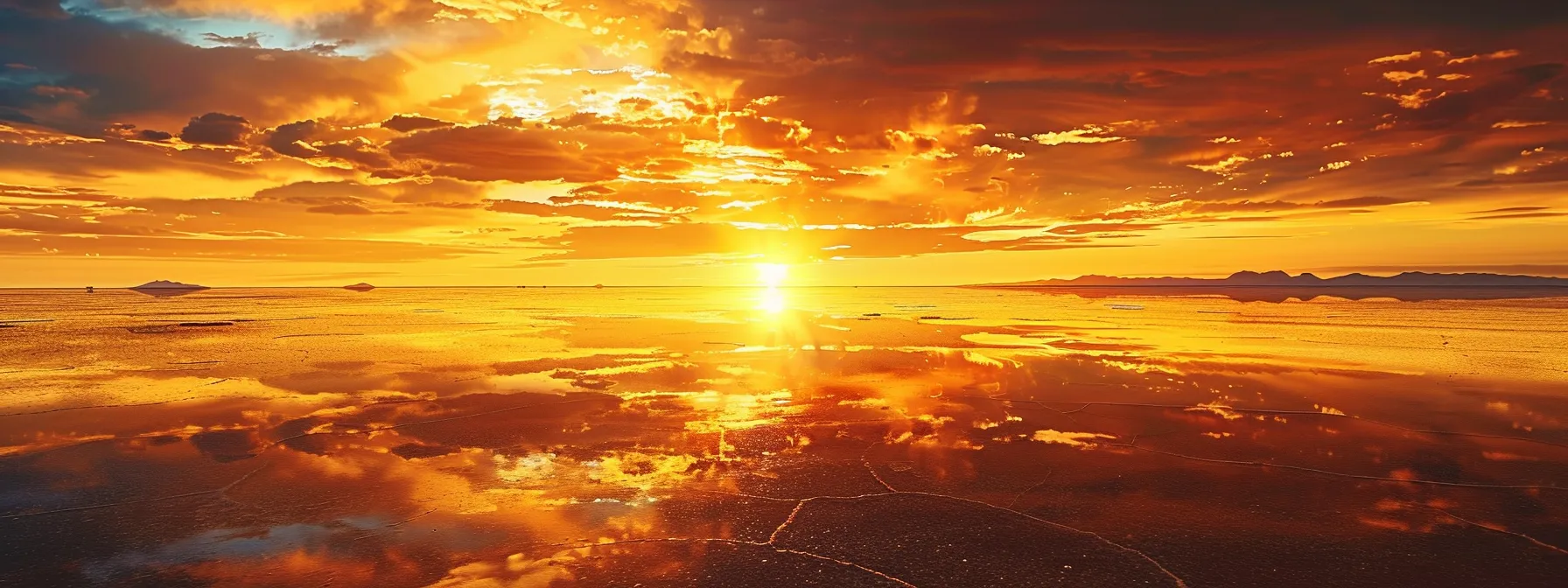
Salar de Uyuni, Bolivia’s crown jewel, is a must-see on my list. This vast salt flat offers incredible tours, including stops at Incahuasi Island. I’ve experienced its beauty in both dry and wet seasons, each offering unique perspectives.
From Santa Cruz de la Sierra to Sucre, I’ve traversed Bolivia in various vehicles, discovering remnants of the Inca Empire along the way.
Highlights of the Salt flats tour
My Salar de Uyuni tour was an unforgettable experience. The vast white expanse of the salt flats created surreal landscapes that seemed to stretch endlessly. I was amazed by the unique optical illusions we could create with our cameras, making for some truly memorable photos.
One of the highlights was visiting the Incahuasi Island, a rocky outcrop covered in giant cacti. This oasis in the middle of the salt desert offered stunning panoramic views of the surrounding flats. It’s a stark contrast to the Amazon rainforest I’d visited earlier in my Bolivian adventure.
The tour also took us to the Eduardo Avaroa Andean Fauna National Reserve, a protected area teeming with wildlife. Here, I saw flamingos in colorful lakes and marveled at the diverse landscapes, from volcanoes to geysers. This tourist attraction showcases Bolivia’s incredible natural diversity:
- Vast white salt flats.
- Incahuasi Island with giant cacti.
- Colorful lagoons with flamingos.
- Unique rock formations.
- Active geysers and hot springs.
Visiting Incahuasi island
During my visit to Incahuasi Island, I was struck by its stark contrast to the surrounding salt flats. The island’s rocky terrain, covered in towering cacti, reminded me of the diverse landscapes I’d encountered in Bolivia’s rainforest regions.
As I hiked to the island’s summit, I couldn’t help but think of the journey from Tarija to this remote spot. The panoramic views of Salar de Uyuni were breathtaking, rivaling even the sights I’d seen at Cerro Rico in Potosí.
Before my trip, I made sure to get the necessary vaccines, recalling the health precautions I’d taken for my adventures in Oruro. Incahuasi Island’s unique ecosystem and geological formations made it a highlight of my Bolivian travels, offering a glimpse into the country’s ancient past.
Seasonal changes: Dry vs. Wet season experiences
I’ve experienced Salar de Uyuni in both dry and wet seasons, each offering a unique landscape. During the dry season, I walked on the cracked, white salt surface, marveling at the world’s largest salt flat. This pristine expanse, a UNESCO World Heritage site, stretches as far as the eye can see.
The wet season transforms Salar de Uyuni into a giant mirror, reflecting the sky and creating surreal photo opportunities. I was careful to avoid the risk of yellow fever, common in Bolivia’s tropical regions, by getting vaccinated before my trip. The flooded salt flats create a dreamlike environment that’s unlike anything I’ve seen elsewhere.
Regardless of the season, Salar de Uyuni’s unique culture shines through. I learned about the area’s history, including its use as a prison during colonial times. The landscape changes dramatically with the seasons, offering visitors two distinct experiences:
- Dry season: Vast, white salt desert.
- Wet season: Reflective, mirror-like surface.
- Year-round: Rich cultural heritage.
- Surrounding area: Diverse ecosystems.
We left the salt flats behind, our eyes still dazzled by its vastness. The road beckoned us north, where another marvel awaited at the roof of the world.
Discovering the wonders of Lake Titicaca

Lake Titicaca, straddling Bolivia and Peru, is a must-see in Latin America. I’ve explored the mysteries of Isla del Sol, experienced local cultural traditions, and enjoyed activities along the lake shore.
From the Gate of the Sun to wildlife spotting at Laguna Colorada, this area offers diverse experiences. Remember to check travel visa requirements before visiting.
The mysteries of Isla del Sol
Isla del Sol, nestled in Lake Titicaca, is a place of ancient mysteries and breathtaking landscapes. I hiked along rugged trails, discovering Inca ruins and sacred sites that dot the island. The views of the surrounding valleys and lake are simply stunning.
I spent time with the Aymara people, learning about their traditions and way of life. Their connection to the land and the hot springs on the island fascinated me. It’s a stark contrast to the mining heritage I encountered in other parts of Bolivia.
Exploring the island’s archaeological sites, I felt transported back in time. The ancient ruins and ceremonial centers reveal a rich history that predates the Inca Empire. My journey through Isla del Sol was a perfect blend of natural beauty, cultural immersion, and historical discovery:
- Ancient Inca ruins and sacred sites
- Stunning views of Lake Titicaca
- Interaction with Aymara communities
- Relaxing hot springs
- Challenging hiking trails
Cultural Traditions of Local Communities
During my time at Lake Titicaca, I immersed myself in the rich cultural traditions of the local communities. I was fortunate to witness the Carnaval de Oruro, a vibrant celebration that showcases Bolivia’s diverse heritage. The festival’s colorful costumes and lively music left a lasting impression on me.
I explored the Yungas region, known for its unique biodiversity and cultural significance. The dramatic change in altitude from the Andean highlands to the lush valleys gave me a newfound appreciation for Bolivia’s varied landscapes. I learned about the traditional coca leaf cultivation and its importance to local communities.
My journey also took me to Jesuit missions, where I discovered the fascinating blend of indigenous and colonial influences. These historical sites offered insights into Bolivia’s complex past and the lasting impact of the Jesuits on local cultures. The experience deepened my understanding of Bolivia’s cultural tapestry:
- Vibrant festivals like Carnaval de Oruro
- Traditional practices in the Yungas region
- Historical Jesuit missions
- Diverse indigenous cultures
- Altitude-influenced traditions
Activities Around the Lake Shore
I love exploring the shore of Lake Titicaca, where the stunning architecture of ancient ruins meets the tranquil beauty of the altiplano. The contrast between the rugged Nevado Sajama in the distance and the serene lakeside creates a unique atmosphere that I find captivating.
One of my favorite activities is taking boat trips to various islands, each offering a glimpse into the rich cultural heritage of the region. It’s fascinating to see how local communities have adapted to life on the lake, much like the diverse ecosystems I encountered in Amboró National Park.
For a change of pace, I often hike along the lakeshore, enjoying panoramic views that stretch from the waters of Titicaca to the edges of the Amazon Basin. These walks give me a deeper appreciation for Bolivia’s incredible geographical diversity and the interconnectedness of its various landscapes.
Titicaca’s waters held ancient secrets. But greater mysteries awaited at Tiwanaku‘s ruins.
Unveiling History at Tiwanaku Archaeological Site
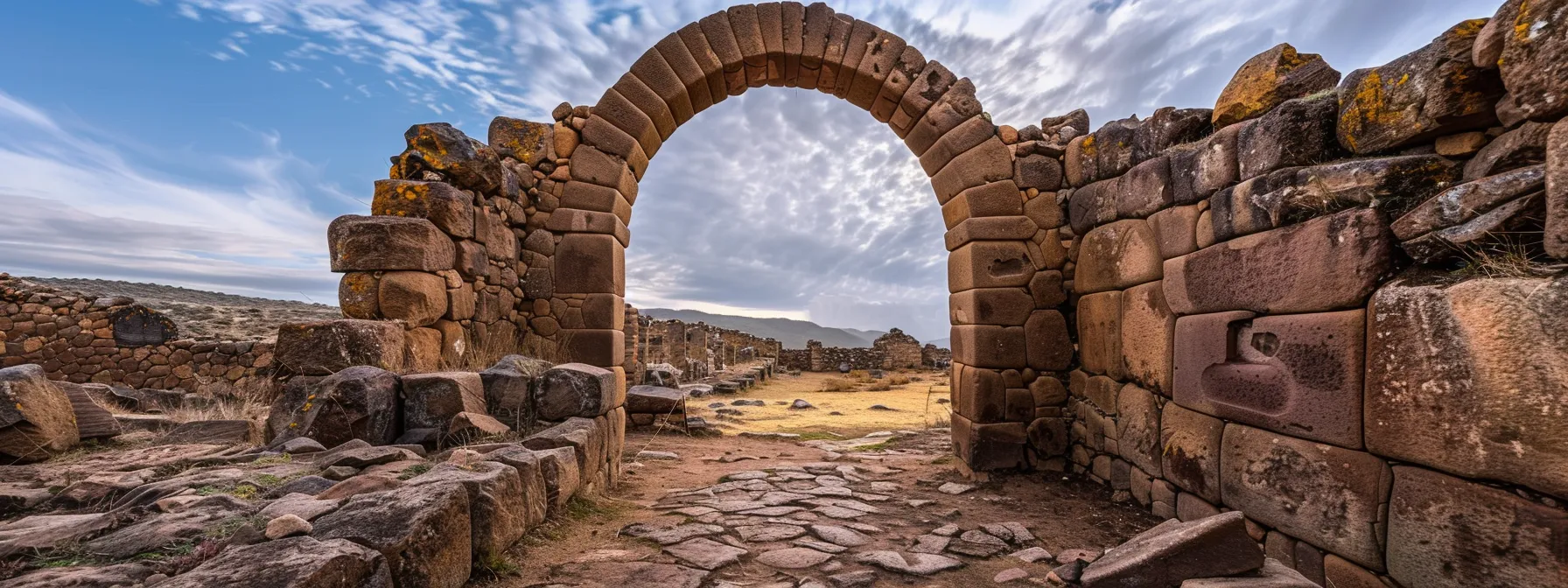
I’ve explored Tiwanaku, an ancient site that’s a must-see in Bolivia. From its impressive monuments to insights into the Tiwanaku civilization, this place is fascinating. I’ll share how to get there and tour options, including tips for dealing with the high altitude. It’s a journey that takes you from Cochabamba‘s valleys to the historic heights near La Paz.
Significant Monuments and Structures
I’ve been amazed by Tiwanaku‘s impressive monuments, which have withstood the test of time and climate. The Gateway of the Sun, with its intricate carvings, reminds me of structures I’ve seen in the Chiquitania region. Despite Bolivia’s diverse ecosystems, from the Atacama Desert to the Amazon, these ancient ruins remain a testament to the ingenuity of early civilizations.
The Kalasasaya temple complex stands out as a prime example of Tiwanaku‘s architectural prowess. Its precise alignment with celestial bodies shows an advanced understanding of astronomy, much like the knowledge needed to navigate Bolivia’s complex legal system today. The site’s layout reveals a sophisticated urban planning system, rivaling even modern cities.
I was fascinated by the Akapana pyramid, which once served as both a religious center and a sophisticated hydraulic system. This multi-purpose structure demonstrates the Tiwanaku people’s ability to adapt to their environment, much like the diverse species found across Bolivia’s varied landscapes. The site’s enduring structures offer valuable insights into ancient engineering techniques that continue to inspire modern architects and archaeologists.
Insights Into Ancient Tiwanaku Civilization
Exploring Tiwanaku, I’ve gained fascinating insights into this ancient civilization. Their advanced knowledge of astronomy and engineering rivals that of cultures known for silver mining, like those in Potosí. I was amazed to learn how they managed water resources, a skill crucial for survival in Bolivia’s diverse landscapes.
The Tiwanaku people’s complex social structure and religious practices have left me intrigued. Their rituals, which may have involved coca leaves, played a significant role in their society. This cultural aspect reminds me of the importance of understanding local customs when engaging in ecotourism activities across Bolivia.
I’ve discovered that Tiwanaku‘s influence extended far beyond its immediate surroundings, reaching areas near modern-day tourist attractions like Sol de Mañana. Their trade networks and cultural exchange systems were surprisingly sophisticated, challenging my preconceptions about ancient civilizations. It’s clear that Tiwanaku was a thriving metropolis, likely with its own methods for maintaining order and preventing crime.
How to Get There and Guided Tour Options
I’ve found that getting to Tiwanaku is relatively easy from La Paz. I usually take a bus or join a tour group, which takes about an hour and a half. The journey offers great views of the countryside, reminding me of trips to Madidi National Park‘s jungle areas.
When visiting the ruins, I always recommend taking a guided tour. The guides provide invaluable insights into the site’s history and significance. They’ve helped me understand the complex water management systems, which are as impressive as the geysers I’ve seen elsewhere in Bolivia.
I suggest visiting during the dry season for the best experience. The site can get muddy during the wet season, making it harder to explore. Remember to take precautions against altitude sickness and yellow fever, just as you would when visiting other high-altitude attractions in Bolivia.
We left Tiwanaku‘s ancient stones behind. The city’s pulse beckoned us to La Paz.
The Vibrant Life of La Paz City
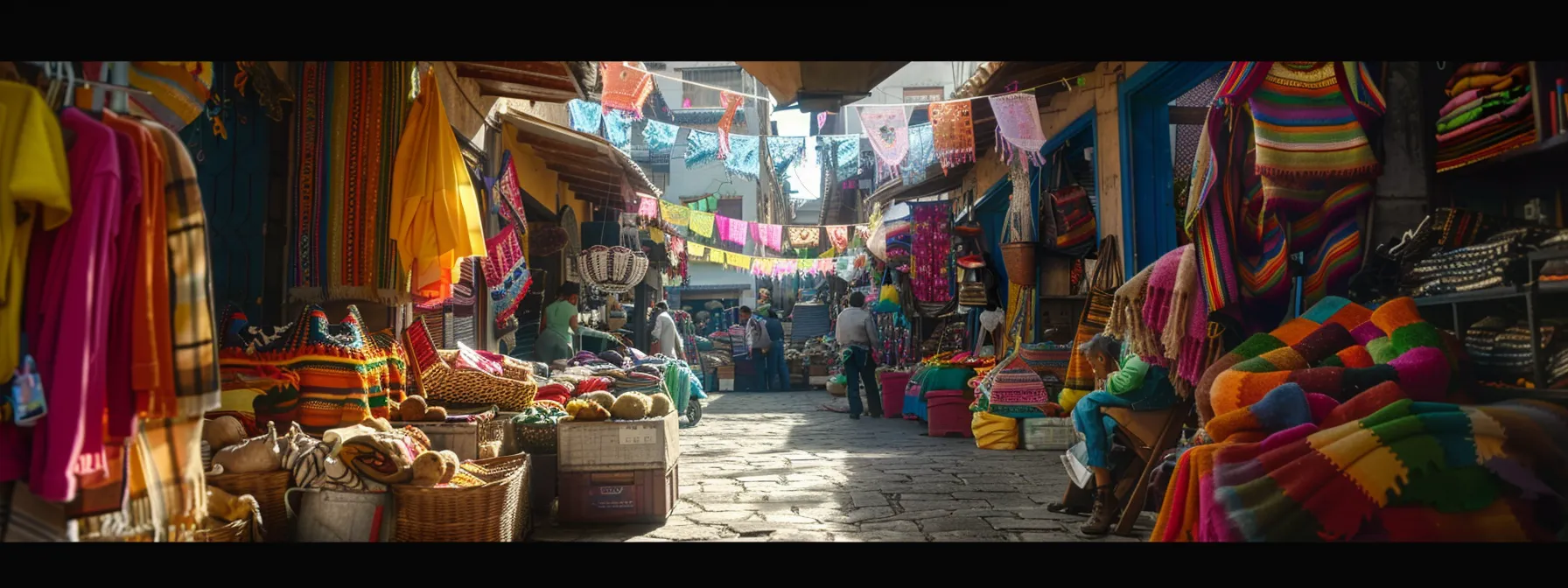
La Paz, Bolivia’s bustling capital, offers a unique blend of culture and modernity. I’ve explored its vibrant Witches’ Market, taken in panoramic views from Mi Teleférico cable cars, and visited the historic San Francisco Church. The city’s energy reminds me of the Jesuit Missions of Chiquitos, while its altitude challenges rival mountain biking adventures. La Paz‘s mix of tradition and progress makes it a must-visit destination.
Exploring the Witches’ Market
I love exploring the Witches’ Market in La Paz, where the scent of incense mingles with the colorful displays of traditional remedies and magical items. As I navigate the narrow streets, I’m careful to keep my travel documents secure and my bolivian bolivianos handy for purchases. The market’s unique blend of indigenous beliefs and modern commerce showcases Bolivia’s rich cultural heritage.
During my visits, I’ve learned about the market’s significance in local traditions and its role in preserving ancient practices. It’s fascinating to see how these customs have adapted to urban life, much like the city’s public transport system has evolved to include the innovative Mi Teleférico cable car network. The market offers a glimpse into Bolivia’s spiritual world that’s as captivating as any UNESCO World Heritage site.
I always advise fellow travelers to respect local customs when visiting the Witches’ Market. It’s important to ask permission before taking photos and to be mindful of the cultural significance of the items on display. For those interested in Bolivia’s immigration history, the market provides insights into how different cultures have influenced the country’s spiritual practices over time.
Panoramic Views From Mi Teleférico Cable Cars
I love riding Mi Teleférico, La Paz‘s cable car system. It offers breathtaking views of the city and surrounding mountains, reminding me of the dramatic cliffs I’ve seen in rural villages. As I glide above the streets, I can practice my Spanish by chatting with locals who use this innovative transport daily.
From the cable cars, I’ve spotted landmarks like the colorful Chiquitano-style buildings that dot the cityscape. The panoramic vistas of La Paz stretching across the valley are truly spectacular, showcasing why this city is one of the most unique in the Americas.
During my rides, I’ve gained a new perspective on La Paz‘s geography and urban layout. The stark contrast between the affluent Zona Sur and the densely populated El Alto is visible from above, offering insights into the city’s social dynamics that you can’t get from street level.
Visiting the Historic San Francisco Church
I love visiting the historic San Francisco Church in La Paz. Its stunning baroque-mestizo façade stands out against the city’s backdrop, especially during the dry season when the sky is clear. Inside, I’m always amazed by the intricate woodcarvings and gold leaf decorations that showcase the fusion of Spanish and indigenous art styles.
The church’s location near the old Inca road system adds to its historical significance. I often imagine how this site has been a spiritual hub for centuries, adapting from pre-Columbian beliefs to Christianity. When exploring the church, I’m careful to respect the sacred space and avoid any risk of infection by following hygiene guidelines.
One thing to note is the small entrance fee, which I think is well worth it for the cultural experience. The church offers a glimpse into Bolivia’s colonial past and its current religious practices. Here’s a summary of what you can expect when visiting San Francisco Church:
The bustling streets of La Paz faded behind us. Ahead lay Madidi’s untamed wilderness, calling us into its depths.
Journey Through Madidi National Park
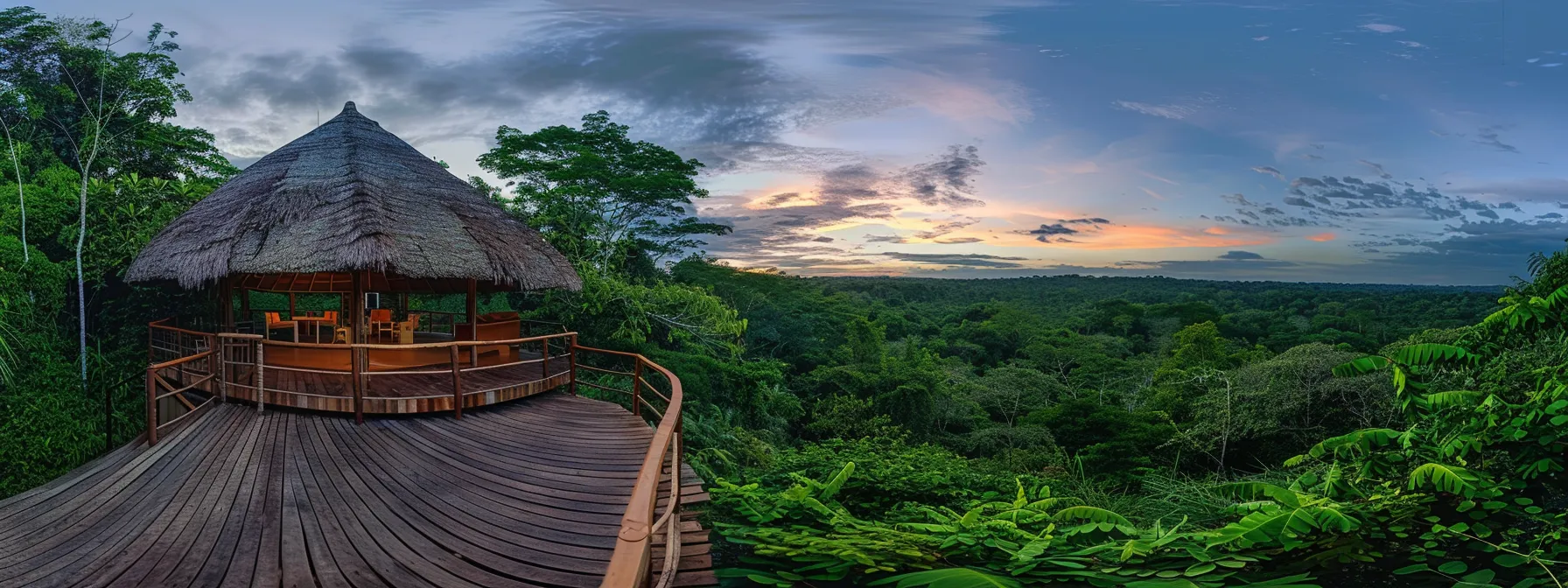
I’ve explored Madidi National Park, a haven for adventure travel and wildlife watching. While enjoying its biodiversity, I learned about sustainable tourism practices that protect this unique ecosystem. The park offers various accommodation options, from basic to eco-luxe. Remember to bring cash and take precautions against mosquitoes. Despite its remoteness, Madidi feels safe, with minimal concerns about violent crime.
Wildlife Watching Opportunities
I’ve encountered incredible wildlife in Madidi National Park, from colorful macaws to elusive jaguars. The park’s diverse ecosystems, spanning from lowland rainforests to Andean peaks, offer unique habitats for various species. While exploring, I’ve learned to manage altitude sickness, which can affect visitors transitioning from lower elevations to higher areas within the park.
During my treks, I’ve spotted rare species like the spectacled bear and giant otter. The park’s proximity to archaeological sites like Tiwanaku adds a cultural dimension to wildlife watching. I always ensure I have enough local currency for guide fees and unexpected expenses, as ATMs are scarce in this remote region.
One of my favorite experiences was birdwatching near Coroico, a town on the park’s outskirts. The area’s rich biodiversity reflects the ancient civilizations that once thrived here, reminding me of the deep connection between nature and human history in Bolivia. I recommend joining guided tours for the best wildlife viewing opportunities and to support conservation efforts.
Sustainable Tourism Practices
I’ve witnessed firsthand how Madidi National Park implements sustainable tourism practices. The park limits visitor numbers and encourages responsible birdwatching to minimize impact on wildlife. These efforts remind me of conservation initiatives I’ve seen near El Fuerte de Samaipata, balancing tourism with ecological preservation.
During my visits, I’ve learned about the park’s collaboration with local communities. They offer eco-friendly lodges and guided tours, providing income alternatives to activities like silver mining. This approach not only supports the local economy but also protects the diverse ecosystems spanning from lowlands to mountain ranges.
I always make sure to bring eco-friendly insect repellent and necessary medication to reduce my environmental impact. The park’s commitment to sustainability extends to waste management and energy use, setting an example for other protected areas in Bolivia and beyond.
Accommodation Options in the Park
I’ve stayed in various accommodations while exploring Madidi National Park, from basic campsites to eco-lodges. These options cater to different preferences and budgets, allowing visitors to immerse themselves in the tropical rainforest. Some lodges offer views rivaling those of Laguna Verde, with the added bonus of being surrounded by the park’s diverse fauna.
During my visits, I’ve found that many lodges in Madidi focus on sustainability, similar to initiatives I’ve seen near Plaza Murillo in La Paz. These eco-friendly accommodations often use solar power and rainwater collection systems, minimizing their impact on the nature reserve. I appreciate how they blend comfort with conservation, offering a unique way to experience Bolivia’s rich biodiversity.
For those seeking a more rustic experience, I’ve tried the park’s camping options. These sites provide a closer connection to nature, though they require more preparation. Regardless of the accommodation choice, I always recommend booking in advance, especially during peak seasons when wildlife viewing is at its best.
We drove away from Madidi’s wild heart, our minds still filled with its untamed beauty. Ahead lay the infamous Yungas Road, a ribbon of danger snaking through the mountains.
Adventures on the Yungas Road
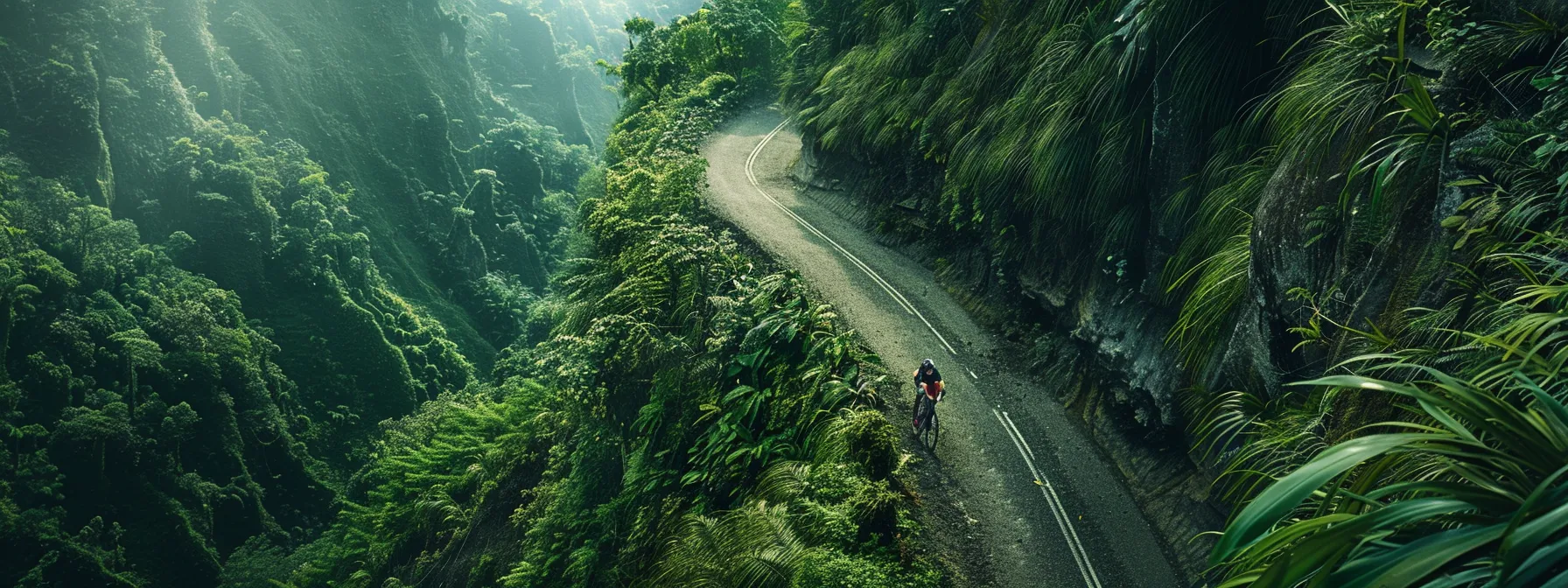
I’ve explored the Yungas Road, a thrilling route that winds through Bolivia’s stunning landscapes. From heart-pumping biking tours to scenic stops showcasing the country’s beauty, this road offers unforgettable adventures. I’ll share safety tips, highlight must-see spots, and delve into the road’s fascinating history, which dates back to the Tiwanaku Empire.
Biking Tours and Safety Tips
I’ve taken several biking tours on the Yungas Road, and it’s an exhilarating experience that combines adventure with Bolivia’s stunning landscapes. Before hitting the road, I always make sure to acclimatize properly, especially since the altitude changes drastically along the route. This acclimatization period gives me a chance to sample some local cuisine and even spot a llama or two in the nearby fields.
Safety is paramount when cycling the Yungas Road. I always wear a helmet, use a well-maintained bike, and follow my guide’s instructions closely. The narrow paths and steep drops require full attention, but the views of the Amazon River basin in the distance make it worthwhile. I’ve found that wearing layers is crucial, as temperatures can vary significantly during the descent.
For backpackers looking to explore Bolivia on a budget, biking the Yungas Road is a must-do activity. I recommend booking with reputable tour companies that provide quality equipment and experienced guides. These tours often include stops at scenic viewpoints where you can catch your breath and take in the breathtaking vistas of the surrounding mountains and valleys.
Scenic Stops Along the Route
I’ve discovered some incredible scenic stops along the Yungas Road that rival the views from Illimani. One of my favorite spots overlooks a valley that stretches towards the Santa Cruz Department, offering a panoramic vista of Bolivia’s diverse landscapes. The contrast between the rugged mountains and lush forests reminds me of the country’s rich biodiversity.
At one viewpoint, I was surprised to find a small pyramid-shaped monument commemorating travelers who’ve braved this road. It’s a sobering reminder of the route’s history and the respect it commands. From here, I could see traces of old Spanish Empire trade routes winding through the valleys below, connecting Bolivia’s past and present.
Another must-see stop offers a glimpse of Isla de la Luna in the distance on a clear day. This unexpected view of Lake Titicaca from the Yungas Road showcases Bolivia’s geographical diversity. I always take a moment here to appreciate how this road connects the Andean highlands to the Amazon basin, a journey that feels like traveling through multiple countries in just a few hours.
Historical Background of the Road
I’ve learned that the Yungas Road’s history dates back to the 1930s when it was built by Paraguayan prisoners of war. As I cycle along its winding path, I often imagine the hardships faced by those early workers. The road’s strategic importance grew during Bolivia’s mining boom, connecting La Paz to the Yungas region and facilitating trade of coca leaves and other goods.
During my travels, I’ve discovered that the road played a crucial role in connecting diverse regions of Bolivia. It links the high-altitude areas near Huayna Potosí to the lush lowlands, passing by communities where I’ve seen miners heading to work. This route has been a lifeline for remote villages, bringing economic opportunities and connecting them to larger cities.
I’ve photographed countless breathtaking views along the Yungas Road, each turn revealing Bolivia’s diverse landscapes. At one viewpoint, I spotted a small shrine to the Virgen de Copacabana, a testament to the road’s cultural significance. Despite its notorious reputation, I’ve found that recent safety improvements have made it easier for tourists to document their journey through this historic route:
The road’s dangers faded as we rolled into Oruro. Drums echoed in the distance, signaling the start of something wild.
Cultural Festivities at Oruro Carnival

I’ve experienced the vibrant Oruro Carnival, a cultural highlight that rivals the ancient wonders of Pumapunku. From colorful parades to traditional dances, this festival showcases Bolivia’s rich heritage. I’ll share insights on the main events, costumes, and tips for visitors, including health precautions like yellow fever vaccines. The carnival’s energy is as diverse as Bolivia’s flora, making it a must-see attraction.
Main Events and Parades
I’ve been lucky enough to witness the main events and parades of the Oruro Carnival firsthand. The Grand Parade, featuring the Diablada dance, is a spectacle that rivals the grandeur of the ancient Tiwanaku empire. I always make sure to bring insect repellent, as the festivities can last long into the night.
The carnival’s procession is a kaleidoscope of color and sound, with dancers moving through the streets like a living, breathing work of art. I’ve found that public transport can be challenging during this time, so I often book accommodation within walking distance of the parade route. This allows me to easily capture stunning photography of the event.
One of my favorite parts of the carnival is the Entrada, which marks the official start of the celebrations. The energy here reminds me of the wild pampas regions I’ve explored in Bolivia. The parade route is filled with dancers, musicians, and spectators, creating an atmosphere that’s truly unforgettable:
- Grand Parade featuring the Diablada dance
- Colorful processions through the streets
- The Entrada marking the official start
- Traditional music and dance performances
- Religious ceremonies honoring the Virgen del Socavón
Traditional Dances and Costumes
I’ve been mesmerized by the traditional dances and costumes at Oruro Carnival. The vibrant outfits, adorned with intricate designs and feathers, rival the beauty of Bolivia’s vicuña-inhabited terrain. Each dance tells a story, blending indigenous and colonial influences, much like how Bolivian wine combines local and European traditions.
During my visits, I’ve learned to identify different dances by their unique costumes. The Diablada dancers, with their elaborate devil masks, always catch my eye. I make sure to stay hydrated and protected from the sun, as the high-altitude celebrations can be as demanding as trekking through Bolivia’s diverse landscapes.
One year, I joined a dance workshop to learn some basic steps. The experience gave me a new appreciation for the stamina required, reminiscent of the endurance needed when exploring Bolivia’s challenging terrain. I’ve found that understanding these dances enhances my overall carnival experience:
Tips for Visitors During Carnival Season
I always book my accommodation well in advance for Oruro Carnival, as the city gets packed quickly. While exploring the festivities, I keep an eye on my belongings to avoid theft, which can be more common during crowded events. I’ve found that staying hydrated is crucial, especially given the high elevation of Oruro.
Before attending the carnival, I consulted a health professional about altitude sickness prevention, as the celebration takes place at a significant elevation. I make sure to pace myself during the festivities, taking breaks to adjust to the altitude. It’s also a good idea to have travel insurance that covers medical emergencies in Bolivia.
I’ve learned that the carnival is a great opportunity to explore other parts of Bolivia too. After the celebrations, I often take a trip to the Beni Department for some wildlife watching or head to San Pedro de Atacama in neighboring Chile for a change of scenery. These side trips help me make the most of my visit to this vibrant region.
The carnival’s colors faded as we left Oruro. Ahead lay Sucre, its white-washed buildings whispering stories of colonial grandeur.
The Colonial Charm of Sucre
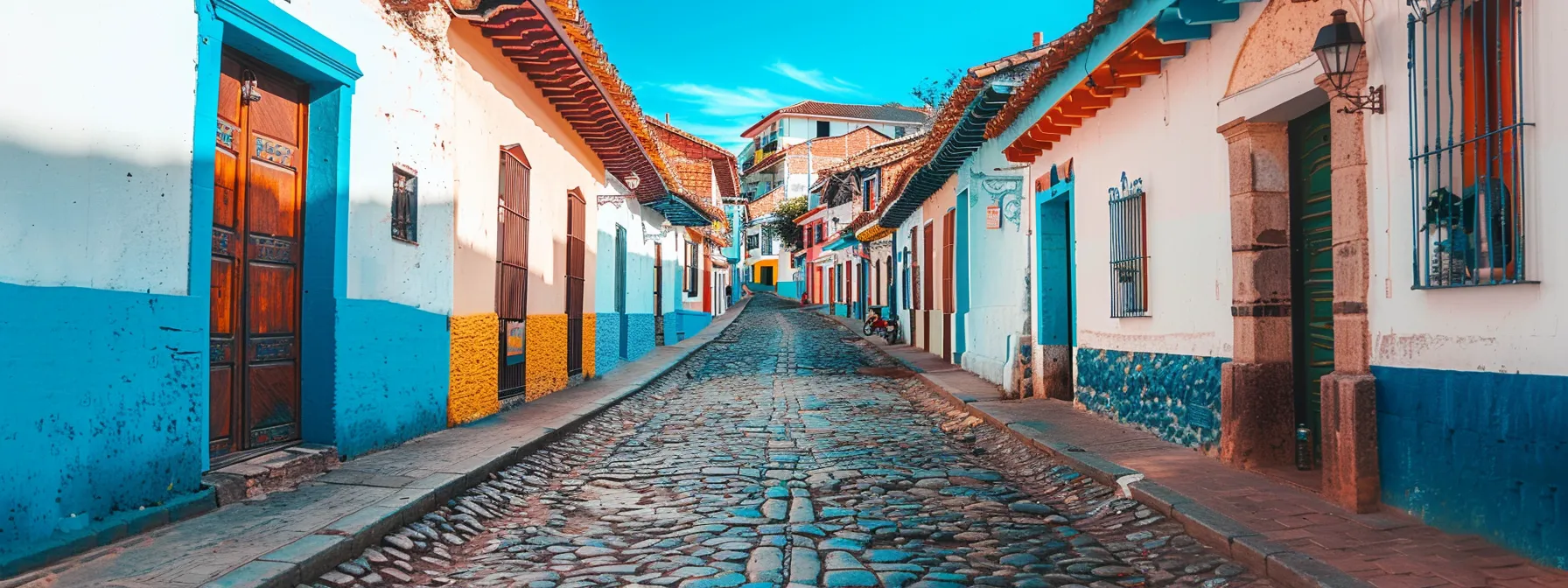
I love exploring Sucre‘s colonial charm. From its historic buildings and museums to the local cuisine featuring delicious salteñas, there’s so much to discover. I’ve found fascinating day trips nearby, including visits to San José de Chiquitos with its sandstone architecture. The city’s rich history, influenced by Paraguay and the Uru people, makes it a must-visit destination in Bolivia.
Exploring Historic Buildings and Museums
I’ve spent countless hours exploring Sucre‘s historic buildings, immersing myself in Bolivia’s rich cultural heritage. The city’s stunning white architecture, especially the Cathedral of Sucre, never fails to impress me during my vacations. I often start my day with a hearty meal at a local café before diving into the city’s fascinating history.
One of my favorite spots is the San Felipe Neri Monastery, where I can climb to the rooftop for panoramic views of Sucre. The monastery‘s peaceful courtyards offer a quiet retreat from the bustling streets below. I always recommend fellow travelers take a guided tour to fully appreciate the site’s historical significance.
The Casa de la Libertad museum is another must-visit for history buffs like me. Here, I’ve learned about Bolivia’s independence and seen important artifacts from that era. After exploring the museum, I often treat myself to a traditional Bolivian lunch at a nearby restaurant, reflecting on the country’s journey from colony to independent nation.
Local Cuisine and Dining Experiences
I’ve savored Sucre‘s local cuisine, finding it a delightful blend of Spanish colonial influences and indigenous flavors. The city’s charming restaurants, often housed in beautifully preserved colonial buildings, offer a unique dining experience. I always recommend trying salteñas, a local specialty that’s perfect for a quick lunch while exploring Sucre‘s Spanish colonial architecture.
One of my favorite dining spots overlooks the main plaza, offering views of the bustling traffic below. Here, I’ve enjoyed traditional dishes like pique a lo macho, a hearty meal that’s ideal after a day of sightseeing. Despite being far from the tropics, Sucre‘s restaurants often feature fresh, tropical fruits in their desserts, adding a refreshing touch to meals.
For a truly authentic experience, I love visiting the central market. The vibrant atmosphere and array of local produce remind me of the diverse landscapes I’ve seen, from the Andes to Licancabur. Here’s what I typically look for at the market:
- Fresh, locally grown fruits and vegetables
- Traditional Bolivian cheeses and meats
- Handmade chocolates from local cacao
- Spices and herbs used in regional cooking
- Street food vendors selling quick, tasty bites
Nearby Attractions and Day Trips
I’ve explored several fascinating day trips from Sucre, including a visit to the ancient ruins of Kalasasaya. This impressive monument, part of the Tiwanaku archaeological site, offers a glimpse into Bolivia’s pre-Columbian history. After marveling at the ancient architecture, I often head to nearby viewpoints for some wildlife observation, spotting condors soaring over the valleys.
One of my favorite excursions is to Chacaltaya, once home to the world’s highest ski resort. Although the glacier has receded, the panoramic views of the Cordillera Real are breathtaking. I always remind fellow travelers to prepare for altitude sickness and bring emergency supplies, as the thin air can be challenging for some.
For a change of pace, I enjoy visiting the charming town of Tarabuco, known for its vibrant Sunday market. Here, I immerse myself in local culture, browsing handmade textiles and trying traditional foods. It’s a perfect complement to Sucre‘s colonial charm, offering a glimpse into Bolivia’s rural life and indigenous traditions.
The old city faded behind us as we drove toward Potosí. Cerro Rico loomed ahead, its dark slopes holding secrets of silver and suffering.
Exploring the Depths of Cerro Rico in Potosí
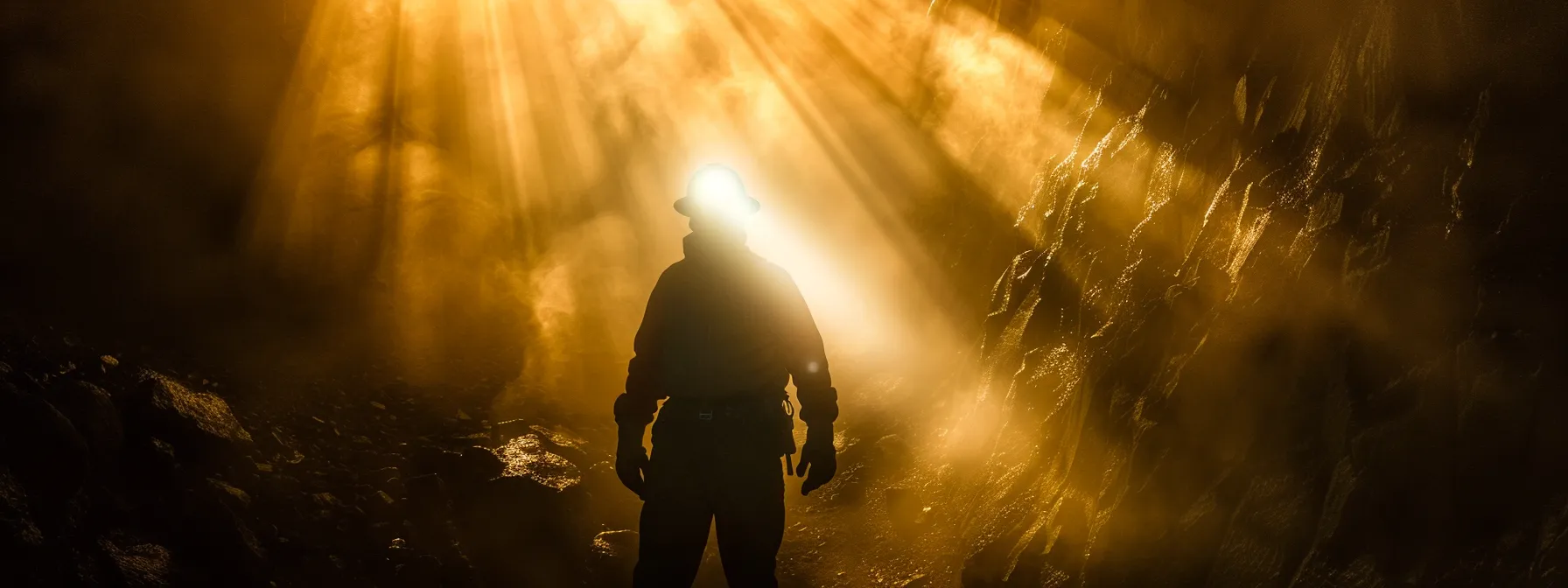
I’ve explored the depths of Cerro Rico in Potosí, experiencing guided mine tours that reveal the harsh atmosphere of Bolivia’s silver mining industry. From learning about the history of this once-booming trade to visiting the Royal Mint, I’ve gained insights into the region’s rich past. Despite the challenging conditions, similar to downhill mountain biking, proper health care precautions made my visit safe and unforgettable.
Guided Mine Tours and What to Expect
I’ve taken several guided mine tours in Cerro Rico, and they’ve been eye-opening experiences. The tours typically start with a safety briefing and equipment check, which reminded me of preparing for a trek in Manu National Park. As we descended into the mines, I was struck by the stark contrast between the mountain’s exterior and the challenging conditions inside.
During the tour, I learned about the miners’ daily lives and the customs they follow to stay safe underground. Our guide explained how miners often visit the cemetery before entering the mines, a tradition that highlights the dangers they face. Despite the somber atmosphere, I found the miners’ resilience inspiring, much like the determination I’ve seen in travelers overcoming disabilities to explore Bolivia.
One aspect that surprised me was the absence of violence in the mines, despite the tough conditions. The camaraderie among miners was evident, and they welcomed us warmly. However, the tour can be physically demanding, requiring ducking through narrow passages and climbing ladders. I recommend wearing sturdy shoes and bringing water, as the mines can get hot and dusty.
The History of Silver Mining Industry
I’ve delved deep into the history of Potosí‘s silver mining industry, tracing its roots back to the 16th century. The discovery of silver in Cerro Rico transformed this remote Andean region into one of the wealthiest cities in the world. As I explored the area, I couldn’t help but draw parallels between the historic silver trade routes and modern-day journeys from Tupiza to Cusco.
During my visits to Potosí, I learned about the devastating impact of colonial exploitation on the indigenous population. The harsh working conditions in the mines led to countless deaths, a stark contrast to the luxury goods, like singani, that flowed from the region. I found it fascinating how the silver from Cerro Rico financed the Spanish Empire‘s global ambitions.
Today, as I wander through Potosí‘s streets, I see remnants of its former glory alongside the ongoing mining operations. The decline in silver production has led to diversification, with some miners now offering tours to visitors like myself. It’s a bittersweet experience, much like spotting a rare river dolphin in the Amazon – a glimpse into a world both beautiful and fragile.
Visiting the Royal Mint of Potosí
I’ve visited the Royal Mint of Potosí, and it’s a fascinating glimpse into Bolivia’s rich history. The tour operator I chose prioritized safety, ensuring we had a secure experience while exploring this historic site. As I walked through the mint, I was struck by the immense impact of silver production on Bolivia’s past and present.
The museum houses an impressive collection of coin-making machinery and colonial-era artifacts. I learned about the harsh sentences imposed on workers caught smuggling silver, highlighting the strict control over the mint‘s operations. The guide’s insights into sustainable tourism efforts to preserve this important site added depth to my visit.
One surprising fact I discovered was the use of coca leaves as a stimulant for workers in the past, much like how some miners still use the plant today to combat fatigue. The Royal Mint offers a compelling look at Bolivia’s colonial history, connecting the dots between silver production, economic power, and social dynamics in a way that brought the past to life for me.
We left the dark depths of Cerro Rico behind. The trail to El Fuerte De Samaipata called, promising ancient secrets and sweeping vistas.
Hiking and History at El Fuerte De Samaipata

I’ve explored El Fuerte de Samaipata, a fascinating site that blends Bolivia’s rich history with stunning natural beauty. From uncovering its archaeological significance to hiking through the surrounding trails, this place offers a unique experience. I’ll share insights on planning your visit, including tips on nearby attractions like San Pedro and the Royal Mint. El Fuerte’s diverse landscape, from cattle-grazing fields to distant glacier views, showcases Bolivia’s varied terrain.
Archaeological Significance of the Site
I’ve been fascinated by the archaeological significance of El Fuerte de Samaipata. This pre-Columbian site showcases a unique blend of cultures, with evidence of Inca, Chané, and Spanish influences. As I explored the ruins, I was struck by the contrast between the site’s ancient stone carvings and the nearby colonial-era courtyard, reminiscent of the baroque architecture I’d seen elsewhere in Bolivia.
During my visit, I learned that El Fuerte de Samaipata is home to several endangered species, adding another layer of importance to its preservation. The site’s massive rock, covered in intricate carvings, serves as both a religious monument and an astronomical observatory. It’s mind-boggling to think about the skills and knowledge required to create such a complex structure centuries ago.
One of the most intriguing aspects of El Fuerte de Samaipata is its mysterious past. As I walked through the site, passing under a weathered stone arch, I couldn’t help but wonder about the countless stories these ruins could tell. The ongoing archaeological work here continues to uncover new insights into pre-Columbian civilizations, making each visit potentially different from the last:
- Ancient stone carvings depicting animals and geometric shapes
- Remnants of Inca, Chané, and Spanish settlements
- Astronomical alignments in the rock formations
- Ongoing archaeological excavations revealing new discoveries
- Protected habitat for endangered species
Hiking Trails and Natural Surroundings
I’ve hiked the trails around El Fuerte de Samaipata, and they’re a paradise for nature lovers. The baroque-inspired landscapes offer stunning views, but I always keep an eye out for pickpocketing, especially in crowded areas. Despite some challenges with infrastructure, the trails are well-maintained and offer a mix of difficulty levels.
During my hikes, I’ve noticed how the natural surroundings reflect Bolivia’s rich biodiversity. From dense forests to open plains, the variety is astounding. I’ve learned that gender doesn’t play a role in trail access; everyone can enjoy these beautiful paths equally. The changing scenery keeps me engaged throughout my treks:
One of my favorite aspects of hiking here is the connection between nature and history. As I walk, I often stumble upon small archaeological sites, reminding me of the area’s rich past. The trails offer a unique blend of natural beauty and historical significance, making each hike an educational adventure.
How to Plan Your Visit
When planning my visit to El Fuerte de Samaipata, I always check the local ecosystem conditions and pack accordingly. I’ve found that the site’s unique geography can pose challenges, so I make sure to have proper hiking gear and plenty of water. It’s also wise to consider medical evacuation insurance, given the remote location and potential for altitude-related issues.
I recommend visiting the nearby butterfly house before or after exploring El Fuerte de Samaipata. It’s a great way to learn about the local flora and fauna while taking a break from hiking. During my last visit, I chatted with locals about Evo Morales‘ impact on tourism in the area, gaining interesting insights into Bolivia’s recent history.
To make the most of your trip, I suggest arriving early in the morning to beat the crowds and heat. The site’s layout can be confusing, so I always hire a knowledgeable guide to help me navigate and understand the historical significance of different areas. Don’t forget to bring a camera – the views from El Fuerte de Samaipata are truly spectacular.
Frequently Asked Questions
What is the best time to visit Salar de Uyuni in Bolivia?
The best time to visit Salar de Uyuni is during the dry season, from May to November. This period offers clear skies, stable weather, and optimal conditions for exploring the vast salt flats. You’ll experience the iconic mirror effect and stunning landscapes without rain interruptions. For a unique perspective, consider visiting between December and April. During these wetter months, a thin layer of water covers the salt flats, creating a mesmerizing reflection of the sky. However, be prepared for potential travel disruptions due to flooded areas.
How can I explore Lake Titicaca and its floating islands?
Lake Titicaca, straddling Peru and Bolivia, offers a unique cultural experience. Book a tour from Puno to visit the Uros floating islands, made entirely of totora reeds. You’ll learn about the indigenous Uros people’s way of life and can even take a ride in a traditional reed boat. For a deeper exploration, consider staying overnight on Taquile or Amantani Island. These larger islands showcase authentic Quechua culture, stunning landscapes, and breathtaking sunsets over the world’s highest navigable lake. Don’t miss the opportunity to try local cuisine and purchase handmade textiles.
What are the must-see attractions in La Paz, Bolivia’s capital city?
La Paz, Bolivia’s administrative capital, offers stunning attractions like the Witches’ Market, where local healers sell mystical remedies. The vibrant city also boasts the San Francisco Church, a masterpiece of colonial architecture, and the nearby Valle de la Luna, a surreal landscape of eroded rock formations. For panoramic views, ride the Mi Teleférico cable car system connecting different parts of the city. Don’t miss Plaza Murillo, the city’s main square, home to important government buildings. Adventure seekers can tackle the nearby Death Road, a thrilling mountain bike descent with breathtaking views.
Is it safe to bike on the Yungas Road in Bolivia?
Biking on Bolivia’s Yungas Road, also known as “Death Road,” is extremely dangerous. The narrow, winding path along steep cliffs has claimed numerous lives over the years. While some tour companies offer guided rides, the risks remain significant due to unpredictable weather, loose gravel, and sheer drops. For thrill-seekers, the Yungas Road offers breathtaking views and an adrenaline rush. However, it’s crucial to carefully consider the dangers before attempting this ride. If you choose to bike it, use a reputable tour company, wear proper safety gear, and follow all guidelines to minimize risks.
What historical sites can I visit in Sucre, Bolivia’s constitutional capital?
Sucre, Bolivia’s constitutional capital, boasts several historic sites. The Casa de la Libertad, where Bolivia’s independence was declared, is a must-visit. La Recoleta Monastery, with its stunning views and colonial architecture, offers a glimpse into the city’s past. The Metropolitan Cathedral also stands as a testament to Sucre‘s rich history. For those interested in pre-Columbian history, the Museo ASUR showcases indigenous textiles and artifacts. The Parque Cretácico, featuring dinosaur footprints, provides insight into the region’s prehistoric era. These sites offer visitors a comprehensive look at Sucre‘s diverse historical heritage, from ancient times to the colonial period and beyond.
Conclusion
Bolivia’s top tourist attractions offer an unparalleled blend of natural wonders, rich history, and vibrant culture. From the otherworldly landscapes of Salar de Uyuni to the ancient ruins of Tiwanaku, each destination provides unique experiences that showcase the country’s diverse beauty and heritage. Exploring these majestic sights not only satisfies the adventurous spirit but also deepens one’s understanding of Bolivia’s complex past and present. By discovering these top attractions, travelers can immerse themselves in the heart of South America, creating lasting memories and gaining a profound appreciation for Bolivia’s remarkable treasures.



